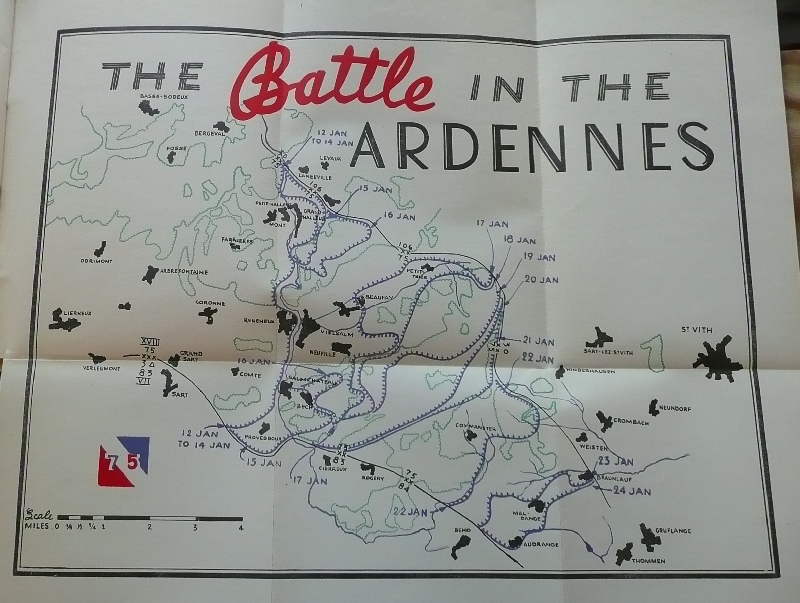|
Moderated by NW Okie! |
Volume 10 , Issue 302008Weekly eZine: (371 subscribers)Subscribe | Unsubscribe Using Desktop... |
WWII - Battle of Ardennes Map

"Ideally, a new division's introduction to combat should be a realitively easy one, but Field Marshal Gerd von Rundstedt's 1944 December offensive in the Ardennes presented such a threat to the Allied cause that the 75th Infantry Division was obliged to start combat with the toughest fight encountered in the whole war in the west. Dduring its month in The Bulge -- the first half on the defensive, the second half on the offensive -- the 75th Infantry Division won its spurs by helping to smash the German advance and by retaking the ground that had been lost. The rookie division had become seasoned in a battle described by Prime Minister Churchill on 19 January 1945 as one that would live forever as a famous American victory.
"The Ardennes mountains extend over broken terrain characterized by deep ravines, narrow valleys, and steep hills, with numerous intervening small streams and cross compartments. Much of the area is heavily forested, largely with fir trees. Blinding snow storms, with subsequent drifting, added to the terrain difficulties. Snow drifts often filled ravines so as to make them unnoticeable until men and equipment disappeared from sight. The snow hampered movement, and enabled personnel and equipment to be easily spotted, especially at night. Mine fields laid in the snow were difficult to detect. While a few good roads existed along the routes through the larger towns, most often difficult secondary roads had to be used.
"During the first phase, 24 December thru 14 january 1945, some of the Division's major elements were attached elsewhere, in piecemeal fashion in order to stem the nazi break through toward Liege, Brussels, and Antwerp.
"During the second phase, 15-24 january, the 75th Infantry Division took part in the XVIII Airborne corps' coordinated attack to retake St. Vith and its vital road net. The Division's role in the battle -- to cross the Salm River to capture Vielsalm -- was a classic example of the double envelopment. The 291st Infantry on the north attacked and seized the high ground north of the city; the 289th Infantry attacked and seized the high ground south of the city. Thus the whole valley became untenable for the enemy, and he withdrew. a patrol from the 2d Battalion, 291st Infantry, discovered the withdrawal, and Corps was requested to block the upper end of the valley with troops in the vicinity. Determined resistance by the enemy held the corridor open, and the withdrawal continued under fire. The Germans then began a series of delaying actions which characterized the rest of the battle....."
| View or Add Comments (0 Comments)
| Receive
updates ( subscribers) |
Unsubscribe
| © . Linda Mcgill Wagner - began © 1999 Contact Me | |
